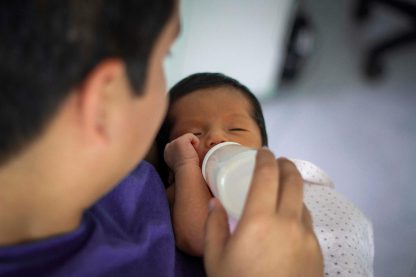Table of Contents
Hiring the Right Babysitters
One of the most important aspects of managing multiple babysitters is ensuring that you hire the right individuals for the job. When screening potential candidates, look for individuals who have experience working with children, appropriate certifications (such as CPR and First Aid), and a genuine passion for childcare. Conduct thorough background checks, including criminal history and reference checks, to ensure the safety and well-being of the children in your care.
In addition to qualifications, consider the personalities and communication styles of potential babysitters. It is important to build a team of individuals who work well together and share a common approach to childcare. Consider conducting group interviews or trial periods to observe how candidates interact with each other and the children in your program before making a final hiring decision.
On-Demand Childcare in Your Neighborhood
Book a Sitter
Setting Expectations and Guidelines
Once you have hired a team of babysitters, it is essential to establish clear expectations and guidelines for their roles. Create a handbook that outlines policies and procedures, including information on scheduling, behavior management, emergency protocols, and communication guidelines. Review this handbook with each babysitter individually and address any questions or concerns they may have.
In addition to written guidelines, consider holding regular team meetings to discuss any updates or changes to policies, as well as to address any issues that may arise. Encourage open communication among your babysitters and create a supportive environment where they feel comfortable voicing their opinions and sharing feedback. By setting clear expectations and fostering a positive team dynamic, you can ensure consistency in care and a cohesive approach to childcare.
Creating a Communication Plan
Effective communication is key to managing multiple babysitters successfully. Establish a communication plan that outlines how information will be shared among your team, as well as with parents and other stakeholders. Utilize a combination of in-person meetings, group chats, email, and communication apps to keep everyone informed and up to date on important information.

Consider designating a lead babysitter or team leader who can serve as a point of contact for communication and coordination. This individual can help ensure that schedules are covered, responsibilities are delegated effectively, and any concerns or issues are addressed in a timely manner. Encourage regular check-ins and feedback sessions to maintain open lines of communication and address any challenges or conflicts that may arise.
Providing Ongoing Training and Support
In addition to setting expectations and guidelines, it is important to provide ongoing training and support for your babysitters. Offer opportunities for professional development, such as workshops, seminars, and online courses, to help them enhance their skills and stay current on best practices in childcare.
Encourage your babysitters to share their own experiences and knowledge with each other through peer mentoring and collaborative learning opportunities.
Consider hosting regular training sessions on topics such as child development, behavior management strategies, and emergency preparedness to ensure that your team is well-equipped to handle any situation that may arise.
Utilizing Technology to Streamline Operations
There are a variety of technological tools available to help streamline operations and improve communication among your team of babysitters. Consider using scheduling software to manage shifts and assignments, communication apps to share information and updates in real-time, and online portals for parents to access important documents and communicate with your team.
In addition to technology, consider implementing a system for tracking attendance, maintaining records, and monitoring progress to ensure that all aspects of your childcare program are running smoothly. By utilizing technology to streamline operations, you can free up time for your babysitters to focus on providing high-quality care to the children in your program.
In conclusion, effectively managing multiple babysitters for your childcare program requires careful planning, clear communication, ongoing training, and the use of technology to streamline operations. By hiring the right individuals, setting expectations and guidelines, creating a communication plan, providing support and training, and utilizing technology effectively, you can create a cohesive team that provides high-quality care for the children in your program. By prioritizing the well-being and safety of the children in your care, you can create a positive and nurturing environment that promotes growth and development for all involved.










